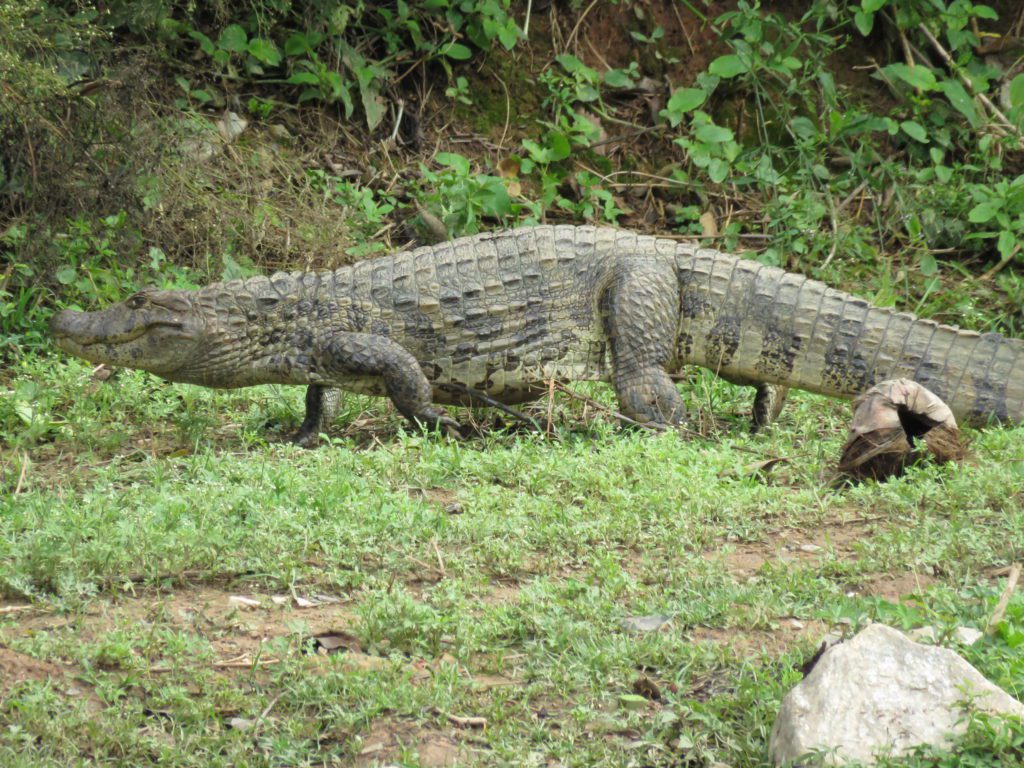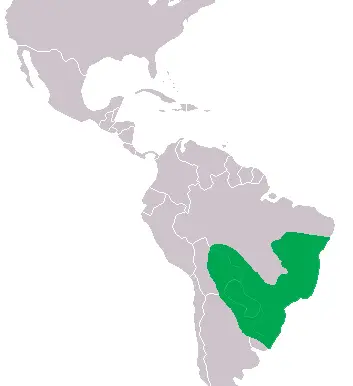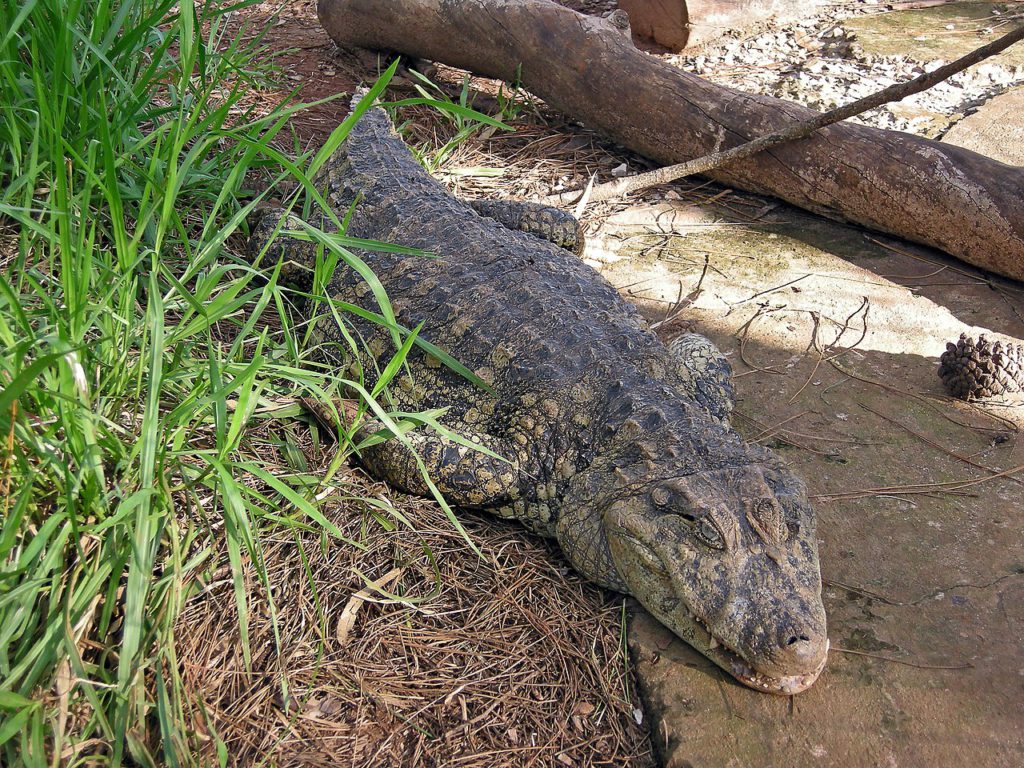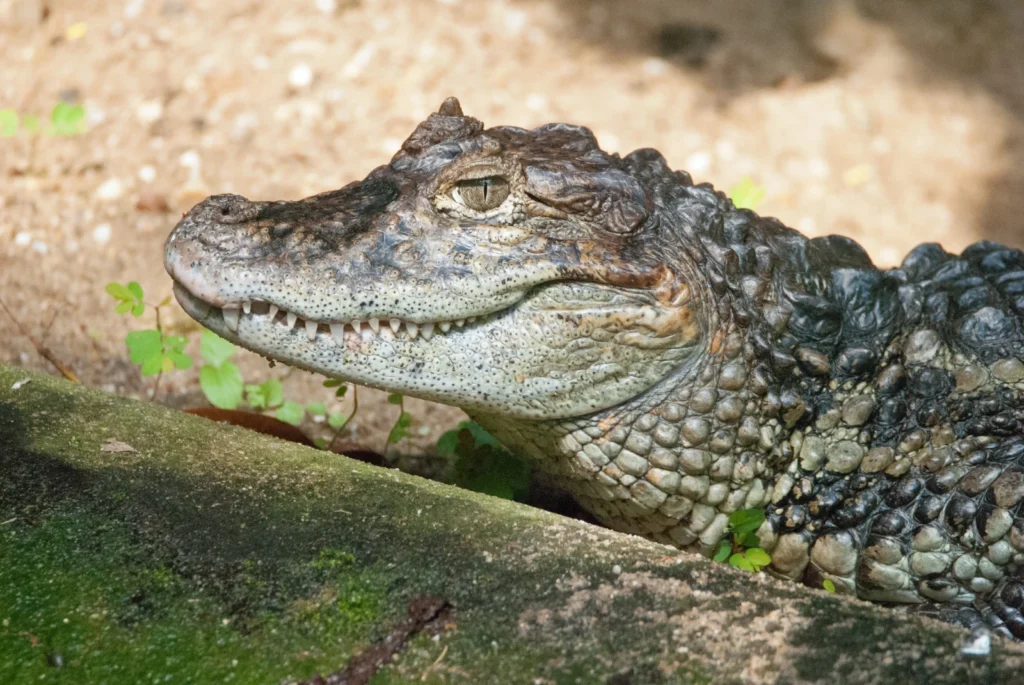Broad-billed Caiman (Caiman latirostris) – one of the hardiest carnivores in South America, which lives in the freshwater bodies of Brazil, Argentina, Uruguay, Paraguay, and Bolivia. It got its name from broad muzzle, which distinguishes it from other members of the alligator family (Alligatoridae).
This view is available a key predator of swamp and river ecosystemsIt plays an important role in regulating the abundance of fish, shellfish, and other small animals.
Consider the biology, behavior, lifestyle and current state of the population of this unique predator!

Scientific classification
🔬 Taxonomy of the broad Caiman:
✔ The Kingdom: Animals (Animalia)
✔ Type: Chordal (Chordata)
✔ Class: Reptiles (Reptilia)
✔ Row: Crocodile-like (Crocodylia)
✔ Family: To the alligator (Alligatoridae)
✔ Gender: The Caimans (Caiman)
✔ View: Broad-billed Caiman (Caiman latirostris)
📌 Interesting!
Title latirostris it comes from the Latin words latus - "wide" and rostrum - "muzzle", emphasizing the main feature of this species.
Origin and history of the discovery
🕵 When and by whom was the broad-winged caiman described?
* The species was first described French naturalist Georges Cuvier in 1807.
* It is believed that the ancestors of the Caimans existed in the Mesozoic era, along with the dinosaurs.
📌 Interesting!
Fossils of alligator relatives have been found in South America and date back more than a century. 80 million years old!
Appearance and features
💠 What does the Cayman look like shirokrilyy?
• Length: Adults reach 1.8-2.5 metersalthough individual males can grow up to 3 meters.
• Weight: On average 30-60 kg, but large males can weigh over 90 kg.
• Color scheme: Dark greenish or olive, with black spots on the back and a lighter belly.
• Muzzle: Significantly wider compared to other Caimans, which makes it look like an alligator's face.
• Teeth: 72-78 sharp teeth that allow you to crush the shells of turtles and crustaceans.
• Oko: Large, with vertical pupils, which provides good vision in the dark.
📌 Than cayman shirokrilyy different from other Caimans?
✅ The widest muzzle among Caimans
✅ Darker coloration and stronger jaw
✅ Less aggressive than the black caiman (Melanosuchus niger)

Range and habitat
🌍 Where does the Caiman live? shirokrilyy?
It is common in South America, in particular in:
✅ Brazil
✅ Argentina
✅ Paraguay
✅ Uruguay
✅ Bolivia
🔹 What places of residence does he choose?
✅ Swamps and wetlands
✅ Slow-flowing rivers and lakes
✅ Flooded plains
📌 Interesting!
Broad Caimans can survive a drought by burrowing into silt and entering a state of slow metabolism.

Lifestyle and behavior
🔹 Hunting and nutrition
• What does the Caiman eat? shirokrilyy?
✅ Fish
✅ Shellfish and crayfish
✅ Waterfowl
Череп Turtles (thanks to their powerful jaws)
✅ Small mammals
📌 Interesting!
Unlike most Caimans, this species can even feed on carrion, which is atypical for crocodyliformes.
Reproduction and development
💡 How does the broad caiman breed?
* During the mating season males let out loud roars and beat the water with their tails.
* Females build nests made of twigs, grass and silt.
* Procrastinate 25-45 eggsthat are being incubated 70-90 days.
* The incubation temperature determines the sex of the cubs:
✅ Higher temperature – males
✅ Lower temperature – females
📌 Interesting!
Broad Caiman females very caring mothers and they protect the cubs for up to several months after hatching.

Threats to the species and their protected status
⚠ What threatens Broad Cayman?
• Poaching because of the valuable leather
• Loss of the natural environment due to drainage of swamps
• Conflicts with people "sometimes farmers kill them
🛡 Security status:
, Entered in IUCN Red List how "vulnerable" (VU).
Находится Is protected by law in Brazil and Argentina.
развед Breeding and reintroduction programs are carried out in nature reserves.
📌 Interesting!
Broad caiman population increased due to security measuresbut the species is still vulnerable to environmental changes.
Conclusion
Cayman Islands shirokrilyy – a hardy and powerful predator, which plays an important role in the aquatic ecosystems of South America.
💡 Basic facts:
✔ The widest muzzle among Caimans
✔ It feeds on fish, birds and turtles
✔ It lives in freshwater bodies of South America
✔ The population is recovering, but remains vulnerable
📢 Cayman Islands shirokrilyy - a true swamp lord who demonstrates unique adaptations to the environment and is admired for his power!